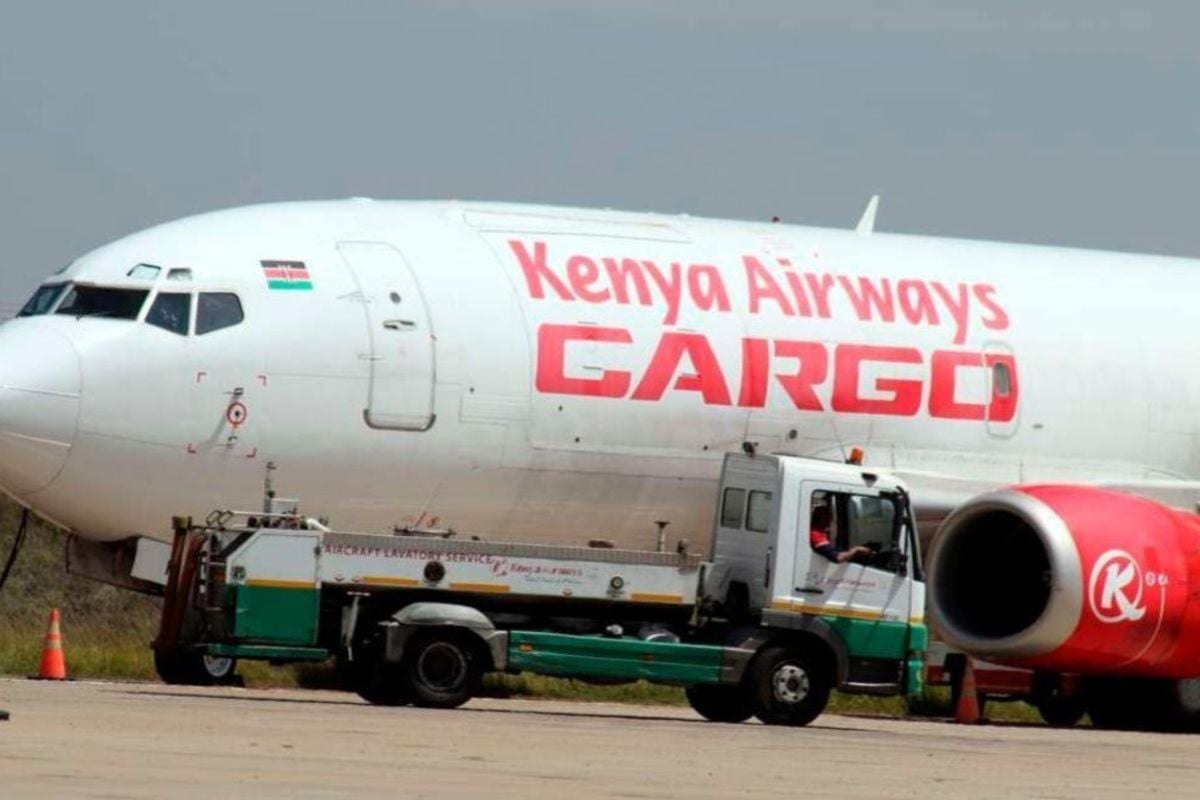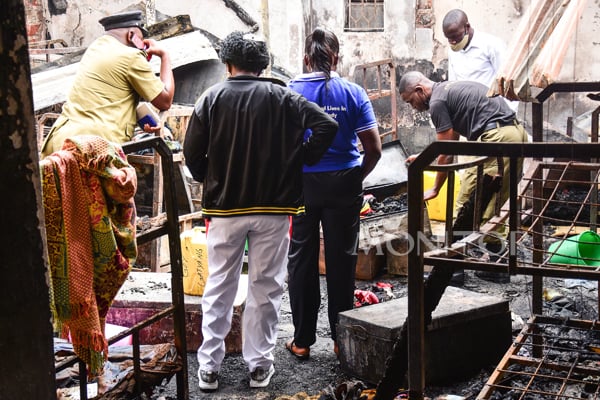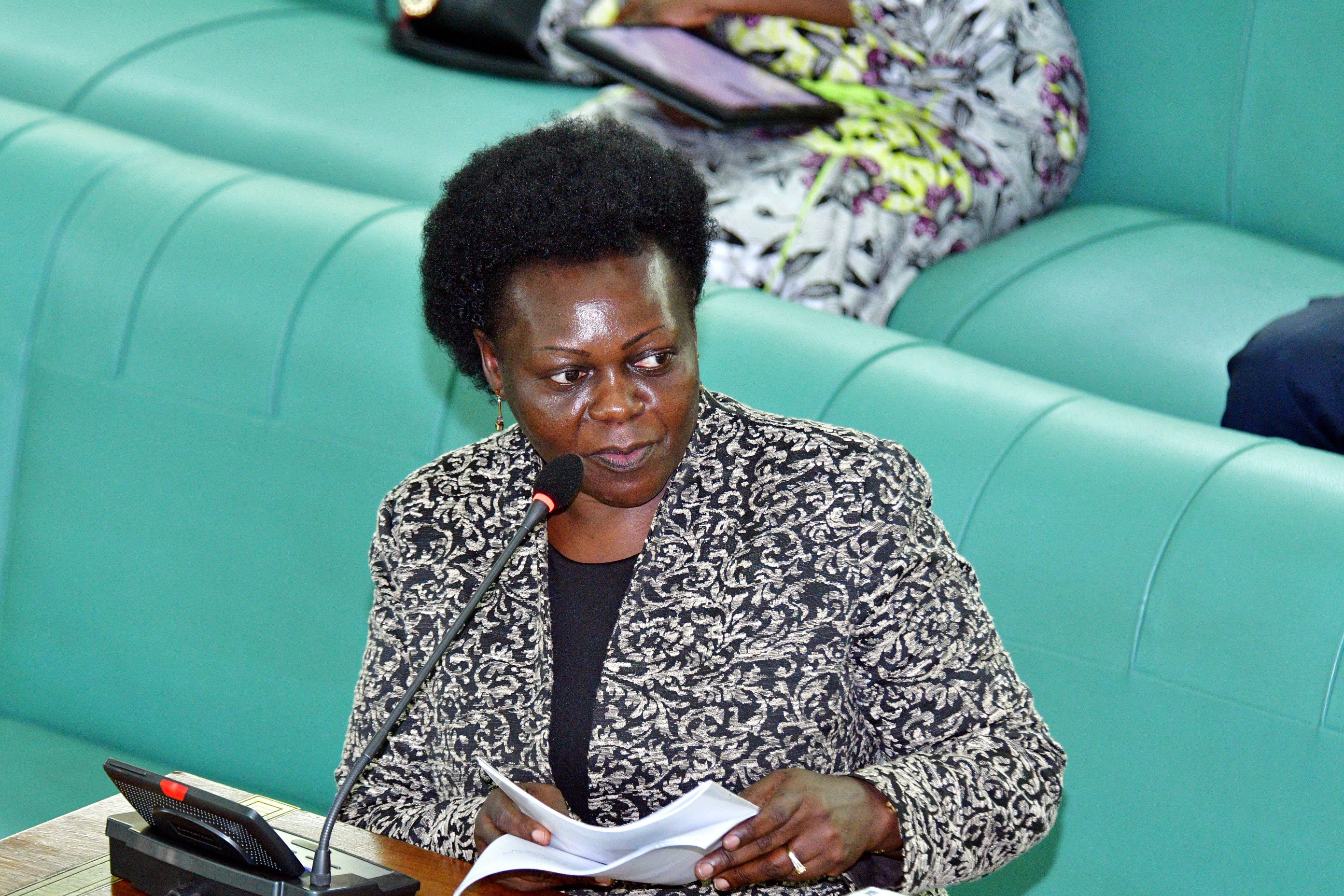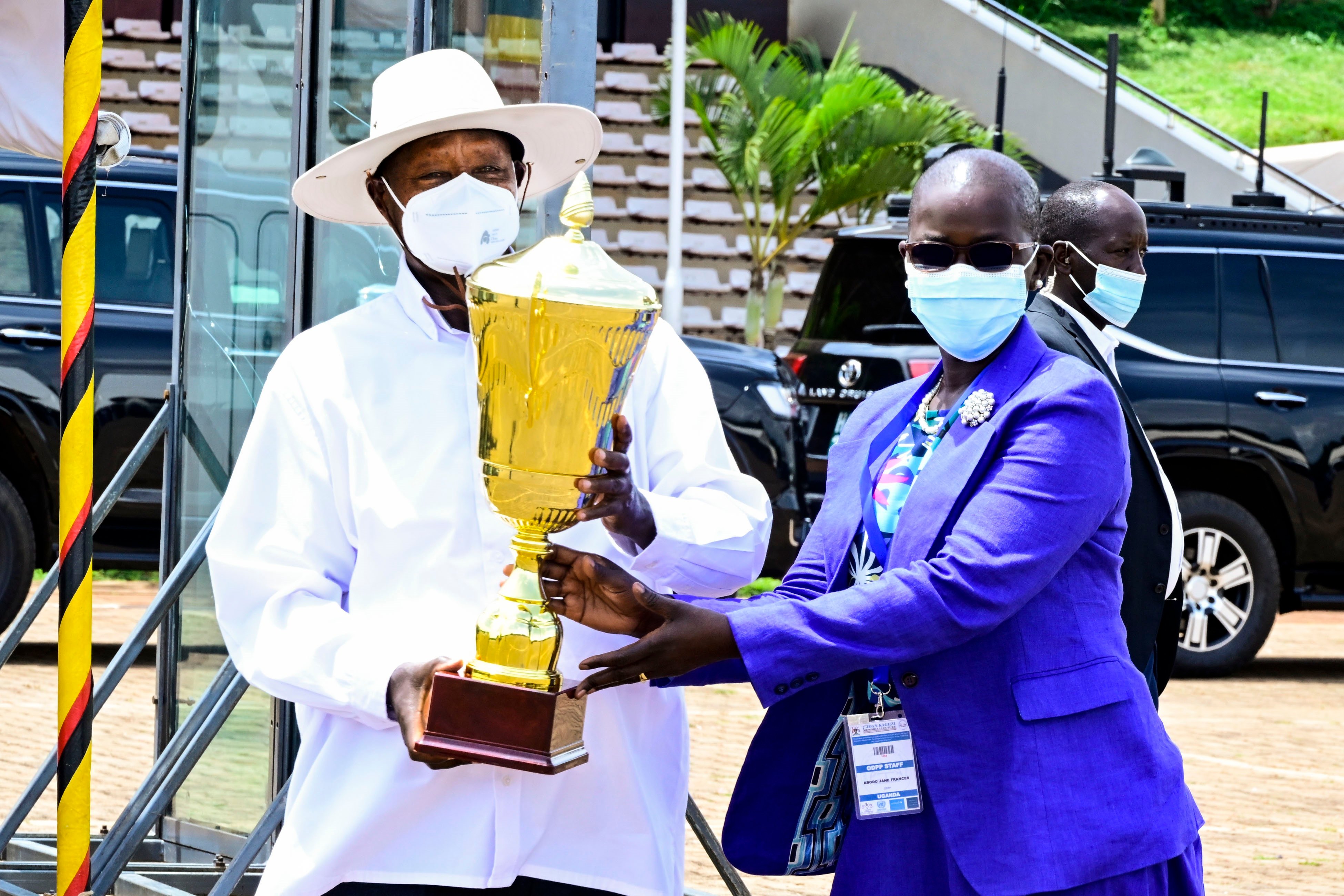Prime
Floods displace 400, set to submerge district offices
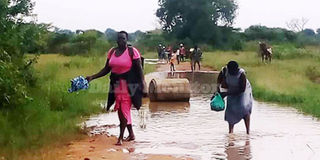
Women walk through a flooded section of Ocamolum - Amolatar Town Council road in Amolatar District on July 7. PHOTO/PATRICK EBONG
What you need to know:
- The problem started last year when the water level on Lake Kyoga started rising.
Floods caused by rising water levels on Lake Kyoga are threatening to submerge Amolatar District headquarters.
So far, the floods have displaced hundreds of households in 11 sub-counties in Amolatar and submerged hundreds of acres of gardens.
The lake is located about five kilometres away from Amolatar District headquarters but since last year when the water level on the lake started rising, floods started submerging the surrounding area.
In some areas in Namasale Sub-county and Namasale Town Council, the water level has gone as far as three kilometres upland, according to the sub-county chairperson, Mr Rembo Onguu.
“In Namasale Sub-county alone, about 400 households have been displaced and about 2,000 gardens have been submerged by floods. About 500 people who have been displaced are now cultivating in Ajuka Forest Reserve in Nabwoyo Parish,” he said.
The sub-county chairperson said they requested the National Forestry Authority (NFA) to allow people whose gardens have been submerged to grow food in the forest reserve since they don’t have alternative land.
Mr Onguu noted that the floods keep on advancing upland daily and there is fear that it may cover all villages on the lake shores.
“Half of Atolit Village in Olyaka Parish is flooded and it has turned into part of the lake. Even me I am not going to be spared because the flood is only about 500 metres away from my home and it’s advancing daily,” Mr Onguu said.
He said the floods have not spared the roads. “Residents are now using engine boats to travel on the submerged Alemere – Awelo – Etam – Amolatar Town Council road,” he said.
Other roads, which are also flooded, include the one from Ocamolum in Nalubwoyo Sub-county to Amolatar Town Council.
Mr Peter Otim, a resident of Atolit Village in Namasale Sub-county, said maize, cassava, beans and millet gardens have all been submerged by the flash floods and his family has got nothing to eat.
Mr Ocen appealed to the government to consider them under the Covid- 19 relief cash.
“If this money is given to us, we can use it for buying seeds, which we can plant in the second rainy season, which has just started,” Mr Otim said.
Mr Geoffrey Ocen, the Amolatar District chairperson, said the disaster is causing panic among workers and residents of Amolatar Town Council.
“And as I talk now, water from the lake is just about one kilometre to the district headquarters,” Mr Ocen in an interview on Saturday.
He said nine sub-counties and two town councils, which are near the lake, have already been affected.
The affected sub-counties are Namasale, Nalubwoyo, Agwingiri, Akwon, Arwotcek, Abeja, Etam, Acii and Awelo. The disaster has not spared Namasale and Amolatar town councils either.
“I have sent my team on ground to do an assessment and collect the data and they will report back to me next week. It’s the result of the findings which will guide our next cause of action.”
In March 2020, the Amolatar District leadership made a request to the Office of the Prime Minister (OPM) for some emergency relief items. The relief aid that came through was inadequate, the district chairperson added.
“We received some posho (maize flour) and beans, which we gave out to the flood affected families, but it was not enough for all of them,” Mr Ocen noted.
Govt warning
Last year, the government raised a red flag about the rapid rising water levels, urging Ugandans that have “invaded, cultivated and settled” in lakeshores and river banks to vacate immediately to avert calamity. Mr Alfred Okot Okidi, the permanent secretary at the ministry of Water and Environment, warned that the rapid rising water levels on Lake Kyoga could cause devastating consequences for the districts sharing the lake.
